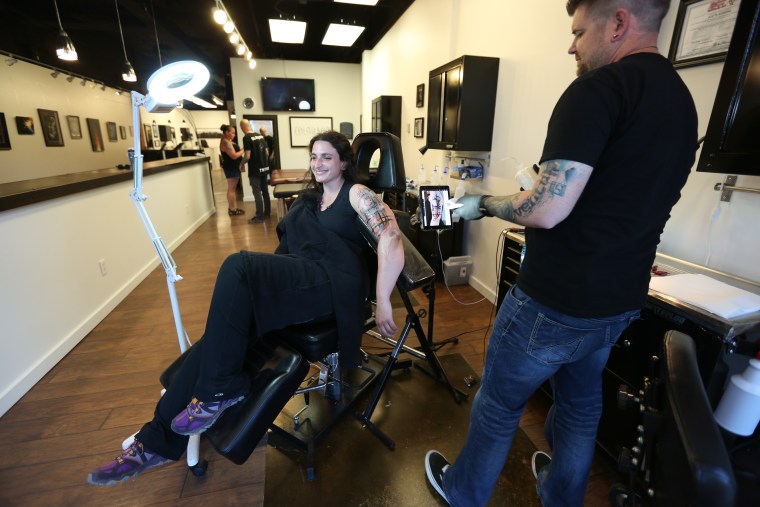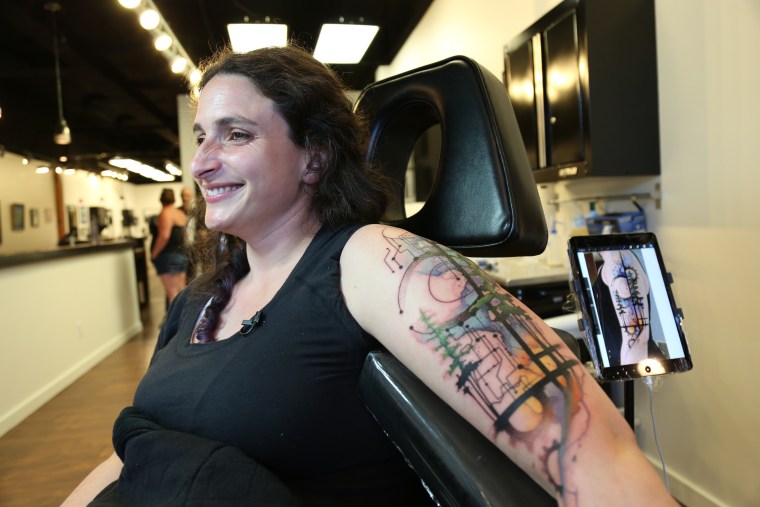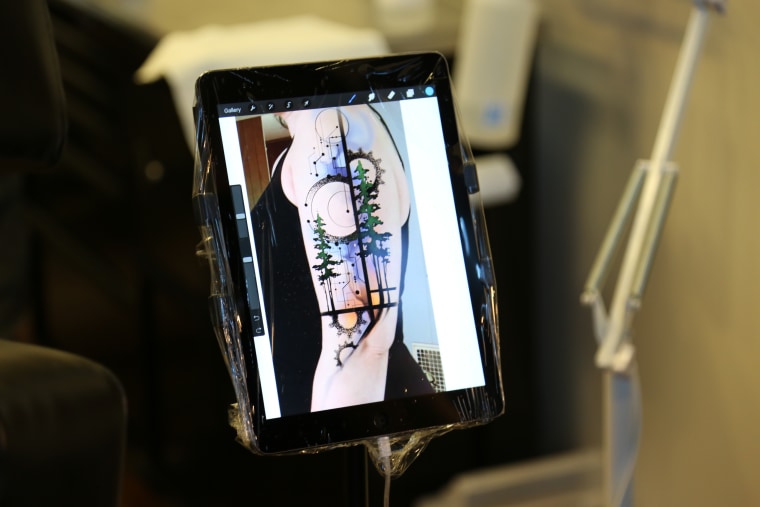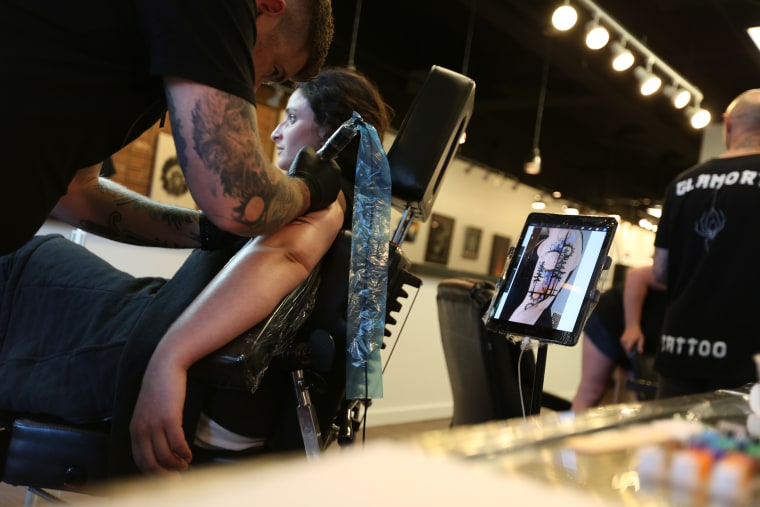The Raw Canvas is not your typical tattoo parlor, and Justin Nordine is no typical tattoo artist.
When Nordine, 36, left his successful career as a painter to open a tattoo studio in 2008, his friends and colleagues thought he was crazy. He left a master's program in art education and instead founded the Raw Canvas Tattoo Studio in downtown Grand Junction, Colorado.
"I think people get a little nervous sometimes if something's different," said Nordine, seated at the long sleek counter near the entrance to his studio. "I am still using traditional techniques as a tattoo artist, but I'm doing something that people hadn't seen before."
Nordine's clients now travel thousands of miles and cross the country to visit his bright studio, which doubles as an art gallery, to get "inked" in his signature fine art style. His work has been compared to watercolor artwork on skin.
Now, in addition to his style, it’s his design process that’s garnering attention: It’s entirely digital.
"I'm such a technology dork that I love things that are coming out that are new, that are progressive," Nordine told NBC News.
That’s why when the Apple Pencil and iPad Pro were released, Nordine saw it as an opportunity to improve his design process, and purchased them at midnight the day they were available.
"It has changed my reality as an artist. Tenfold," said Nordine, holding the slim, white stylus in hand. "I hold the Pencil, and anything I do with it — I can turn it into a paintbrush, a marker, an actual pencil. An airbrush. Splatter paint. I mean, you name it. I literally have an entire bucket of tools in my pocket with one piece of technology."
Not only has it simplified Nordine's design process, but it has benefited his clients.
37-year-old Laura Palermo traveled from upstate New York to have one of Nordine's designs tattooed on her left arm. She sent Nordine a photo of her arm, and their design consultation process was entirely digital until they met in the studio the day of her appointment.

"I have never [before] seen anyone use a tablet to draw out tattoo ideas," said Palermo in an interview with NBC News. "He was actually the first one that I ever saw, so I was like, 'What? This is amazing! How do you even do that?'"
"It's a completely different way of thinking," said Nordine, explaining that the days of drawing on transparency paper are long gone for him. "I now can take my image and bounce it to my next iPad so I have a visual while I'm tattooing. I can zoom in on it if I want to to see the detail. I can change it in an instant."
The day before Laura's tattoo appointment, Nordine used his Apple Pencil and iPad Pro to make changes in real time to the tattoo design, changes Palermo would be able to review and approve before the tattooing began.
Palermo is a hospice social worker and grief counselor, and told Nordine she wanted a tattoo that combined biology and mechanics.

"The idea for me came from my profession and just watching how a pacemaker, something totally inorganic, totally mechanical, keeps an organic body alive," explained Palermo, the day before her appointment. "It just fascinates me."
On the day of her tattoo appointment, Palermo walked into The Raw Canvas with a spring in her step and a hug for Nordine and the studio's staff.
"So this is what I've put together for you," Nordine told Palermo, bringing up the design on his iPad Pro.
"Yes! That's awesome!" said Palermo, smiling at a tattoo design that incorporated gears, circuitry, and natural elements like trees and a sunset.
It wasn't long before Palermo's arm was prepped and cleaned, and then for Nordine to begin the process of outlining and eventually shading the large tattoo.
In all, the process took several hours. Nordine would occasionally adjust or zoom the image on the iPad, and thanks to the exactness of the digital process, the final tattoo looked precise against the digital design.
"That's more than anything than I could have possibly dreamt up myself," said Palermo, admiring the finely drawn lines and waves of color of her tattoo in the mirror.

Despite being a technology evangelist, Nordine says technology will never be able to replace true watercolor art, and that there's something special to feeling and smelling paint on an artist's hands that technology can never provide.
"Having paint on your brush is very different than having digital paint on your Pencil," said Nordine. "I don't think technology can actually replace doing a watercolor piece. But I do believe that it can merge the two together into something really unique."

